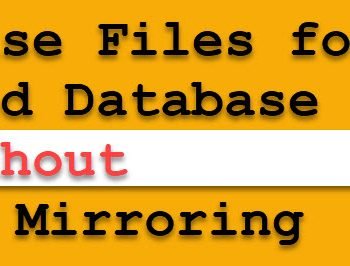I just wrote down following script very quickly for one of the project which I am working on. The requirement of the project was that every index existed in database should be rebuilt with fillfactor of 80. One common question I receive why fillfactor 80, answer is I just think having it 80 will do the job.Fillfactor determines how much percentage of the space on each leaf-level page are filled with data.
The space which is left empty on leaf-level page is not at end of the page but the empty space is reserved between rows of data. This ensures that rearrangement of the data does not happen every time new data rows are inserted.
Following is incorrect image of leaf-level page of fillfactor.

Following is correct image of leaf-level page of fillfactor.

Let us see the T-SQL script which will rebuild each index of all tables of any particular database. Following script will work with SQL Server 2005 (SP2) and SQL Server 2008. It is simple cursor going over each table and rebuilding every index of database.
DECLARE @TableName VARCHAR(255)
DECLARE @sql NVARCHAR(500)
DECLARE @fillfactor INT
SET @fillfactor = 80
DECLARE TableCursor CURSOR FOR
SELECT OBJECT_SCHEMA_NAME([object_id])+'.'+name AS TableName
FROM sys.tables
OPEN TableCursor
FETCH NEXT FROM TableCursor INTO @TableName
WHILE @@FETCH_STATUS = 0
BEGIN
SET @sql = 'ALTER INDEX ALL ON ' + @TableName + ' REBUILD WITH (FILLFACTOR = ' + CONVERT(VARCHAR(3),@fillfactor) + ')'
EXEC (@sql)
FETCH NEXT FROM TableCursor INTO @TableName
END
CLOSE TableCursor
DEALLOCATE TableCursor
GO
Reference : Pinal Dave (https://blog.sqlauthority.com)





